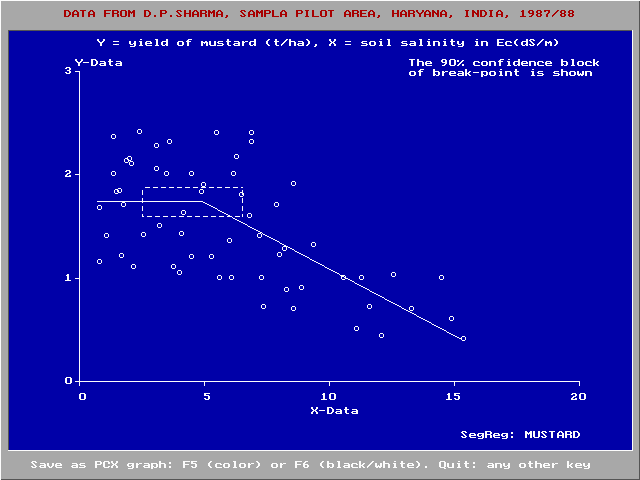FREQUENCY AND REGRESSION ANALYSIS
PART II: REGRESSION ANALYSIS
This article discusses the role of regression analysis
of agricultural data to appreciate how dependent
variables, like crop production, vary with different
magnitudes of influential factors, like soil salinity
or depth of water table. Various techniques of
regression analysis are introduced including the
regression in segments to detect up to which point a
growth factor affects the crop yield and to define the
range where there is no influence.
TABLE OF CONTENTS
6.1 Introduction
6.5 Regression Analysis
6.5.1 Introduction
6.5.2 The Ratio Method
6.5.3 Regression of y upon x
6.5.4 Linear Two-way Regression
6.5.5 Segmented Linear Regression
6.6 Screening of Time Series
6.6.1 Time Stability versus Time Trend
6.6.2 Periodicity of Time Series
6.6.3 Extrapolation of Time Series
6.6.4 Missing and Incorrect Data
6.7 References
|
Category
selection:
Software
& models
Articles
& manuals
Reports
case studies
FAQ's
& papers
Home
page
|
|
